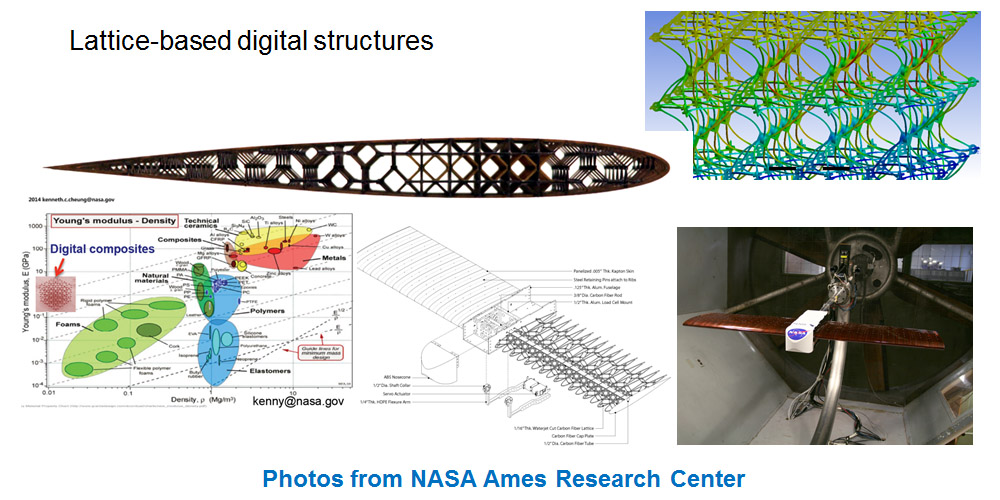Optimum Performance and Control of Highly Flexible Mission Adaptive Aircraft
At the advent of recent development in advanced flexible composites (e.g., the lattice-based wing structures shown below) as well as sensor and actuator technologies, in-flight adaptive wing/aircraft morphing is now becoming a tangible goal. The ultimate objective of the project is to develop active aeroelastic tailoring techniques that would allow aircraft designers to take advantage of the wing flexibility to create the desired wing load distribution according to the mission requirement, so as to improve overall aircraft operating efficiency and performance, without using the traditional discrete control surfaces.

The first goal of this project is to explore the optimum wing bending and torsion deformations of a highly flexible aircraft in seeking the most efficient (optimum) flight configuration at any given flight scenario. Shown below are the optimum wing shapes under different constraints in the optimization process, which are also compared with the original wing geometry. Only the steady and level flight condition is considered here. However, the optimization approach can be extended to any flight conditions.

From the optimization approach used in this work, a rapid reduced-order model is rendered, which could be used for future development of the reduced-order modal-based flight controllers.
Sponsor: NASA Ames Research Center (ARC)
Colaborator: Prof. Guoming Zhu, Michigan State University
Publications: (Refer to the publication page for detailed paper links)
- Su, W., Swei, S. S.-M., and Zhu, G., “Mission Adaptive Wing Shape Determination for Highly Flexible Aeroelastic Aircraft,” AIAA-2016-1095, Proceedings of the 57th AIAA/ASCE/AHS/ASC Structures, Structural Dynamics, and Materials Conference (at AIAA SciTech 2016), San Diego, CA, Jan. 4–8, 2016.
- Su, W., Swei, S. S.-M., and Zhu, G., “Optimum Wing Shape of Highly Flexible Morphing Aircraft for Improved Flight Performance,” Journal of Aircraft, Vol. 53, No. 5, 2016, pp. 1305–1316. (doi: 10.2514/1.C033490)
